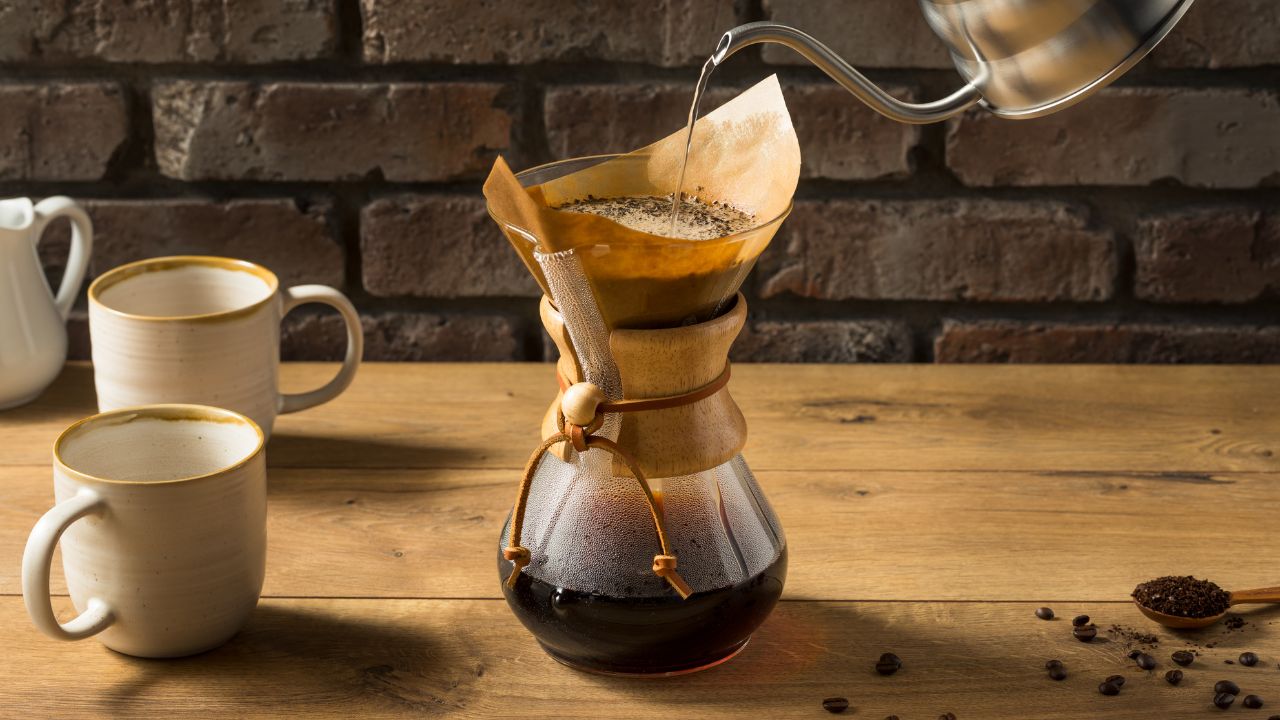Can you make espresso with a pour-over? If you’ve ever caught yourself with a craving for a shot of espresso without an espresso maker in sight, you’ve probably wondered if it is possible. Can you produce an authentic shot of espresso without the pricey machine?
Generally, most people without an espresso maker have to make that tedious trip to their local coffee shop to get a taste of that beloved beverage. But if you’ve got a pour-over at home, will it be enough to make that delicious espresso?
Let’s find out!
Contents
What is a Pour-Over? And How Does It Work?
First, let’s tackle what exactly is a pour-over and how it works.
As the name suggests, a pour-over is a method of brewing coffee wherein extremely hot water is poured over coffee grounds to extract the flavor and aroma. A piece of filter paper is placed into a cup, and the grounds are placed directly into the filter paper. Hot water is poured over the grounds, with enough water being used to ensure that the grounds are completely saturated. The coffee automatically drips down through the grounds and into the cup, producing a cup of pour-over coffee.
Differences between a Pour Over Coffee and an Espresso
Here are some of the key differences between a pour-over coffee and an espresso:
Method of Extraction
With espresso, the coffee is extracted through a combination of heat and pressure. The espresso machine heats the water and forces the water through the coffee grounds. This method also extracts the crema from the grounds.
With a pour-over, its gravity and the contact between the hot water and the grounds that do the work.
Equipment
Making an espresso requires using an espresso machine because of the required heat and temperature. Whether you use an affordable machine that’s designed for home use or an expensive one that’s suited for a commercial setting, you need a machine that can produce at least 9 bars of pressure and can heat the water to at least 195⁰F (or 96⁰C). With high-end machines, you can also guarantee that the pressure and heat will remain consistent through the whole brewing process, resulting in a better-quality shot of espresso.
For pour-overs, the choices for equipment is much more diverse. You can get a commercial pour over setup such as the Chemex, but if you can also create a DIY setup if you have filter paper, funnel, and a carafe at home.
Brewing Time
An espresso maker will take around 1-2 minutes to brew your espresso from start to finish. However, manual machines can take a little bit longer. For pour-overs, the brewing time will vary depending on the grind size and type of filter used but will generally fall between 8-10 minutes.
Taste
Considering that there are strict criteria used when it comes to making espressos in terms of roast, grind, temperature, and pressure, a shot of espresso will generally taste the same no matter where you order it. The taste of the espresso might vary slightly based on the origin of the beans. However, the roasting process tends to remove much of the subtle flavor notes of beans in favor of a deep, rich, and slightly smoky flavor.
For pour-over coffee, however, there are no strict guidelines used in the brewing process. While medium grind beans are recommended for the best flavor, you can still use any grind that you want. This means that the flavor of a cup of pour-over coffee can vary significantly from one cup to another.
Final Product
Just as with the taste and brewing method, a shot of espresso will look the same wherever you order it. The only thing that might change is the serving size, as the standard serving size in Europe is 1oz, while it’s 2oz outside of Europe.
With pour-over coffee, the size and appearance of the final brew can vary.
What is Crema and Why is It Important?
All espresso lovers have a fiery passion for the crema: a rich, oily layer on top of the espresso. The crema is made from the soluble oils extracted from the grounds; thus, it contains the concentrated flavor of the espresso.
Think of the espresso like the icing on a cake: it’s usually the best part, and people look forward to it the most. Any cup of coffee without the crema cannot technically be considered an espresso.
Why are the Standards of Espresso Stricter Than Pour Over Coffee?
Espresso is a type of coffee that’s steeped in tradition and history, and people are fiercely loyal when it comes to sticking to both. That is why there are so many strict rules surrounding the brewing method. That is also why the definition of what makes an espresso has not changed over the years. If you go to highly traditional countries such as Italy or France, even the slightest deviation from the process of making espresso, whether it’s using a different type of roast or even changing the amount of brew produced, it can make the “authenticity” of a cup of espresso suspect. If you request adding flavorings such as chocolate or caramel, you sure get a look of disbelief in return!
Some Final Thoughts
Now that you know the differences between an espresso and a pour-over, let’s go back to the original question: “can you make espresso with a pour-over”?
If you stand by the traditional definitions of espresso, then the answer will be a resounding NO. The pour-over simply cannot produce the heat and pressure required to produce an espresso and the crema. Thus, you cannot make an authentic shot of espresso with a pour-over.
